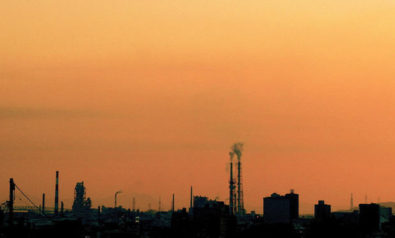In the last part of this series, Vaclav Smil further discusses the rise and fall of many of Japan’s famous manufacturing companies in the light of Japan’s economic performance over the past two decades
In 2007 Japan’s global trade surplus reached about $83bn and despite the subsequent global economic downturn, it was still at $75bn in 2010 (JETRO 2012). The devastating tsunami in March 2011 and the need to buy additional costly energy abroad are mitigating the circumstances that led to the enormous $32bn deficit in 2011.
The latest available data show imports surpassing exports during every month for the first four months of 2012 and a total trade deficit of $25bn by the end of April (JETRO 2012). Continuation of this trend would be particularly worrisome in the long term. Japan’s current account surplus has not only remained constantly in the black, but has grown in contrast to America’s widening current account deficit.
That achievement had its roots in Japan’s status as a manufacturing superpower that was supplying substantial shares of advanced products imported by affluent economies of Europe and North America as well as by rapidly modernizing nations in Asia and Latin America. Even a gradual retreat would have major consequences, particularly when combined with rising cost of energy imports and continuing massive government deficits.
This reveals that Japan’s manufacturing is no longer on a seemingly unstoppable ascending trajectory- the country has become much more like the US. Both countries have lost a great deal of industrial production with China being the greatest beneficiary in both cases. But it is not easy to come up with a net assessment that includes the loss of domestic jobs, decline of regional economies and reduced taxation base. Lower consumer prices, low inflation and higher corporate profits resulting from the overseas manufacturing by Japanese and American multinational companies further aggravate the situation.
As many Japanese companies prefer to reduce working hours and wages rather than lay off regular employees, the country’s deteriorating job market is better measured by aggregate work hours than by unemployment rates. By 2012 the total number of employees was down by 3% compared to the year 2000 but the total work hours were down by 12% (Katz 2012).
While the capital and a few other large cities may be doing fine, Matanle et al (2011) showed that the phenomenon of regional shrinkage is both widespread and multifaceted; a large variety of socio-economic variables mapped by Statistics Japan (2012) makes it possible to follow these regional declines on prefectural level.
It is a truism that Japan remains – in any global comparison and by using virtually any statistical measure – a rich economy. But this brief survey of economic realities adds up to an equally undeniable conclusion: the country’s post-1989 performance has been a fraction of the rise anticipated during the late 1980s, and Japan now faces a concatenation of serious long-term social and economic challenges whose extent and intensity have been potentiated by the global recession.
In some ways Japan still has a cumulative advantage; most notably the decades of current account surpluses. In others its challenges are very similar to those of other major affluent economies; loss of manufacturing, rising government indebtedness, dysfunctional governance. Yet others it has performed even worse than the OECD mean; rising income inequality, regional economic decline and depopulation, and population aging.
Looking back at the last two decades, Fingleton (2012) believes that “in the fullness of time, it is likely that this era will be viewed as an outstanding success story”. He should have asked the Japanese: after all, a country’s economic performance is just the means toward a better life. Results of recent global studies unfailingly show that Japanese people are not satisfied with their lot. In 2006 the Satisfaction with Life Index put them in the 90th spot out of 178 countries, just behind Ghana and Papua New Guinea and far behind all Western economies (White 2007).
Happy Planet Index ranked them 75th out of 143 in 2009 (Abdallah et al 2009); and the latest effort of this kind, OECD’s Better Life Index, ranks Japan 25th out of 34 OECD countries, on a par with South Korea and higher than Greece, Portugal, Turkey and Poland but lower than all major Western economies (OECD 2012).

Naturally, these rankings should be questioned and criticized. But taken in their entirety, they do reflect population-wide perceptions of economic performance and social well-being. This has not been an outstanding success story. This is no model of new, post-industrial development. The current system will likely lead to even greater socio-economic challenges unless its failings and shortcomings are managed with determination and principles guided by realistic expectations.
The views expressed in this article are the author’s own and do not necessarily reflect Fair Observer’s editorial policy.
Support Fair Observer
We rely on your support for our independence, diversity and quality.
For more than 10 years, Fair Observer has been free, fair and independent. No billionaire owns us, no advertisers control us. We are a reader-supported nonprofit. Unlike many other publications, we keep our content free for readers regardless of where they live or whether they can afford to pay. We have no paywalls and no ads.
In the post-truth era of fake news, echo chambers and filter bubbles, we publish a plurality of perspectives from around the world. Anyone can publish with us, but everyone goes through a rigorous editorial process. So, you get fact-checked, well-reasoned content instead of noise.
We publish 2,500+ voices from 90+ countries. We also conduct education and training programs
on subjects ranging from digital media and journalism to writing and critical thinking. This
doesn’t come cheap. Servers, editors, trainers and web developers cost
money.
Please consider supporting us on a regular basis as a recurring donor or a
sustaining member.
Will you support FO’s journalism?
We rely on your support for our independence, diversity and quality.








Comment